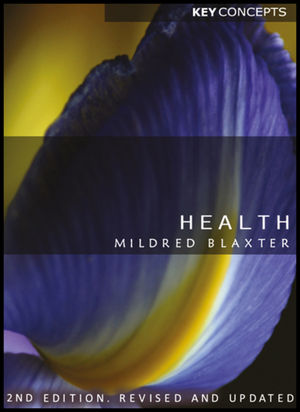Health, 2nd EditionISBN: 978-0-7456-4845-3
Hardcover
176 pages
March 2010, Polity
 This is a Print-on-Demand title. It will be printed specifically to fill your order. Please allow an additional 10-15 days delivery time. The book is not returnable.
Other Available Formats: Paperback
|
||||||
1. How is health defined?
Health as the absence of illness.
Disease as deviance.
Health as balance or homeostasis.
Health as function.
Health as state or status.
The biomedical model.
Contemporary biomedicine.
The social model.
Health, disease, illness and sickness.
How is health measured?
Health capital.
2. How is health constructed?
Health as social construction.
Constructions of history.
Constructions of culture.
Constructivism and feminism.
Illness, labelling and stigma.
Constructions of mental illness.
Constructions of disability.
The critique of relativism.
Medicalisation and the constructions of medical practice.
3. How is health embodied and experienced?
Embodiment.
Lay definitions of health.
Social representations of health.
Self-rated health.
Concepts of the causes of health and illness.
Health histories and subjective health capital.
Illness narratives.
Limitations of narrative.
The search for meaning.
Health as moral discourse and metaphor.
Responsibility for health.
4. How is health enacted?
The rise and fall of 'illness behaviour'.
Person to patient: help-seeking behaviour.
The patient role.
Control and concordance.
Enacted behaviour.
Behaving 'healthily'.
Structure/agency: health as cultural consumption.
Structure/agency: health as self-governance.
5. How is health related to social systems?
A functional relationship.
Responses to functionalism.
Medicine and society.
Health, economic development and social organization.
The downside of economic development.
The concept of inequality in health.
The nature and extent of inequalities.
The causes of inequality.
The socio-biologic translation.
Neo-materialistic explanations.
Social capital.
6. Contemporary change in the meaning of health.
Technology and postmodernity.
Changing boundaries between ill and not-ill.
Changing boundaries of life and death.
Changing boundaries between self and not-self.
Changing boundaries between therapy and enhancement.
Information technologies and medical practice.
Changing attitudes to health and medicine.
New technologies and the risk society.
Evolutionary medicine.
Conclusion.
References.
Index.



